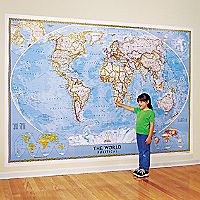For parents who choose to homeschool their kids, finding time to teach them the value of artistic expression can be challenging. After all, they have an assumed responsibility to devote time to a variety of subjects; developing artistic literacy may seem impossible given the time constraints. Plus, parents often feel ill equipped to do so. Today, we'll explore how parents can integrate children's art programs into their homeschooling regimen. We'll also probe the benefits that a children's art school can offer.
Understanding Its Place
Too often, parents who assume the role of teacher dismiss paintings, sculptures, and other forms of artistic expression as nonessential. Worse, some even consider them an expendable extravagance. But, creative works such as these can provide a historical backdrop for a child. Because painters, sculptors, and other artists typically express the times in which they lived through their works, their creations help young people appreciate the dynamic of a given period in history. For example, studying a painting that was created during the European Renaissance provides a glimpse into the people and culture of the time.
Integration Into Daily Education
The most effective strategy for integrating artistic literacy into a child's daily education is by enrolling him or her into a children's art school. The curriculum is carefully designed to engage a child's natural curiosity and imagination. If enrollment into a specialized educational facility isn't possible, parents who homeschool their kids can still incorporate the development of that literacy at home.
While giving young people the tools to express themselves artistically and allowing them to do so without direction can be a valuable exercise, true appreciation begins with studying masterpieces. They should be taught to identify how light and shadow are used in paintings in order to create mood. They should spend time analyzing a piece's composition with regards to space and perspective. Doing so can yield a surprising level of insight in young people. Kids should also have the opportunity to work with a wide array of media, including watercolors, clay, pencil, and charcoal.
By allowing kids to study past masterpieces and work with a variety of media, parents can help them understand history in a new light while developing their natural creativity.
Benefits Of A Children's Art School
Helping young people develop an appreciation for all forms of artistic expression while letting them explore their own creativity presents a challenge for which many parents are unprepared. A children's art school can fill the gap by providing fundamental skills with an approach that develops other traits from which young people benefit.
For example, rather than merely teaching a child how to draw, a specialized educational facility will help kids understand the basics of composition, balance, and proportion. They'll learn how color is used to evoke mood and perspective. As a result, kids learn the value of detail and precision. Plus, the greater their exposure, the further their imagination expands. As they learn an assortment of techniques and the reasons behind their use, their creativity grows.
A children's art school offers kids far more than the ability to draw or sculpt. It teaches them to complete projects while maintaining their focus. It helps them to develop a level of persistence and patience that other kids lack. Eventually, their confidence in themselves and their skills grow stronger. Parents who homeschool their kids can give them an enormous life advantage by enrolling them into a children's art school.
Author Resource:- Christine O'Kelly is a writer for Young Rembrandts, an innovative provider of children's art programs. They encourage creativity and active participation by offering a children's art school that focuses on developing a true passion for art.

Article From ArticleSlide.com






No comments:
Post a Comment